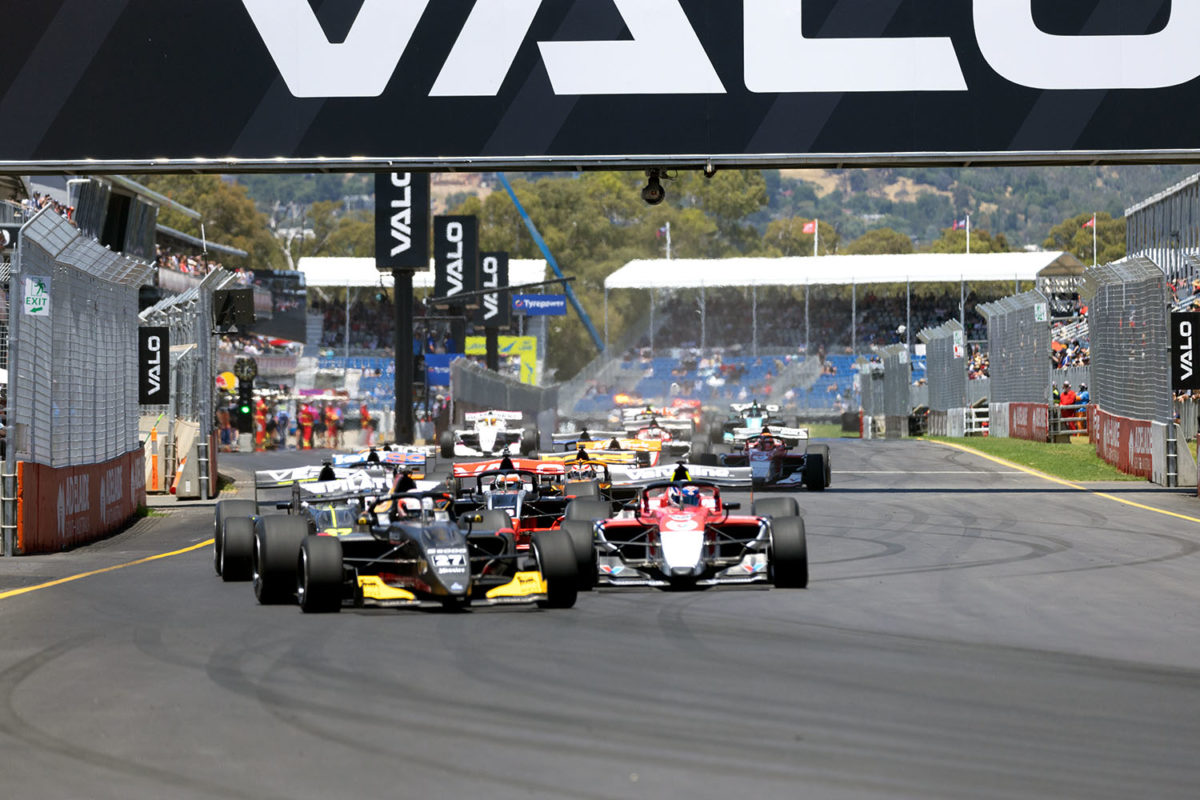

Support categories are getting the rough end of the pineapple.
It’s high time that Supercars and ARG (Australian Racing Group) showed their respective support categories greater respect. Having said that, it’s also a two-way street, as I’ll explain.
The 2022 season has been a litany of disasters for support categories that run on the undercard of the two headline categories in Australia, Supercars and TCR. They’ve had to endure shortened races, abandoned races and too many Safety Car laps.
That’s meant that the value for money offered by Super2/3, Carrera Cup, Porsche Challenge, Trans Am and GT (to name the main ones) has been very average.
There’s no doubt that there are occasions when there are circumstances (such as weather) beyond the control of the organisers on the day. Yet scheduling of race distances with a time certain finish that allows, in Super2/3 for instance, for almost no Safety Car laps is not smart.
One of the major reasons for this is the seemingly never-ending quest to put as many categories onto the race card as possible – clearly to garner as many entry fees as possible.
That’s all very well, but it gets to a point where real estate is being sold that doesn’t exist.
I mentioned earlier that this is actually somewhat of a two-way street. What I mean by that is that there is a responsibility on the drivers to ensure that they race smart. Some of the driving standards in support categories leave much to be desired. Fewer dumb moves will mean fewer Safety Cars.
So, in the hope of initiating a better outcome for 2023, let me propose some changes:
- Start off with proper drivers briefings. In this country they are as weak as p*ss for the most part. There needs to be a clear understanding that repeat offenders can and will be sent home even mid-race meeting to protect themselves and their fellow competitors. The closest we have to being hard enough is the Toyota 86 series. Start by using that as the template. Better discipline and therefore fewer on-track incidents will lead to fewer Safety Cars and more racing laps.
- Don’t attempt to run too many support categories. At Supercars and ARG events many of the support competitors have travelled long distances, at considerable cost, and taken extended leave from day jobs – give them track time, especially if you’re hoping to encourage new blood to race. Much of the time the most expensive part of competing is the logistics, so maximising track time and racing time serves to improve the rate of return once drivers are at the track.
- Reduce the dead time between sessions, especially in the case of Supercars, whilst also respecting the need to have a longer lead in period for a free-to-air Supercars session to ensure that race start times are adhered to as much as possible. Don’t be afraid to make up time later in the day.
- Scheduling into the day cars or bikes doing skids to fill in gaps is no longer appropriate. Fans come to watch racing. By all means have the trick bikers in the infield but keep the track for racing.
- Instead of running support races to a race distance, say 20 laps of Sandown for Super2/3 and also having a time certain cap of 25 minutes, give a race time alone. For instance, spend as little time as is really necessary on the grid; give them a 40-minute race time, from the actual start (no plus-one-lap, the flag goes out the first time the leader passes the control line after 40 minutes) regardless of laps, Safety Cars etc. Competitors will prefer to get on with the racing than spend time sitting on the grid pre-race. Even Supercars runs this way at the AGP.
- Whilst ARG try to run races with much less time delay between each one, their biggest issue is too many categories and not enough track time for each. They also proclaim to run one-hour races for GT, for instance, but the one hour starts at the commencement of the green flag lap rather than the race start – effectively taking up to five minutes off the race time and reducing value for money.
- When the inevitable force majeure event does happen and a support race gets dropped, engineer a make-good for that category as a priority. That could be the following day (re-jigging race timetables or extending a race) or at the next race meeting. But don’t just take the money and run.
- And finally, never again abandon a race day due to weather when an hour later the weather has passed – as happened at Sandown on the Saturday of the ARG event in September, thereby depriving several categories of the chance to race.
There’ll be the inevitable feedback from some people telling me that all this isn’t possible and that this is the way we do things etc. Well, why not try to improve? Why not try to give better value for money especially at a time when many people are feeling the economic squeeze? There’s no rocket science here, just customer awareness.
One more thing – how can it be acceptable (or even legal) to have a time certain finish and then be able to change the time certain finish during a race?
Whilst there’s a rule in the Supercars Operations Manual to allow the Stewards to do this, why on earth isn’t the time certain finish set as late as possible in the first place when the Supp Regs are drawn up? To me, this is just a lazy way of being able to rectify an error. Set the absolute maximum race time at the time the Supp Regs are written. Tell me what happens the day we have a competitor fuelling to finish on the basis of a time certain finish only to have that changed with five minutes to go? When is a time certain race finish time certain? It isn’t. Work that one out.






















Discussion about this post